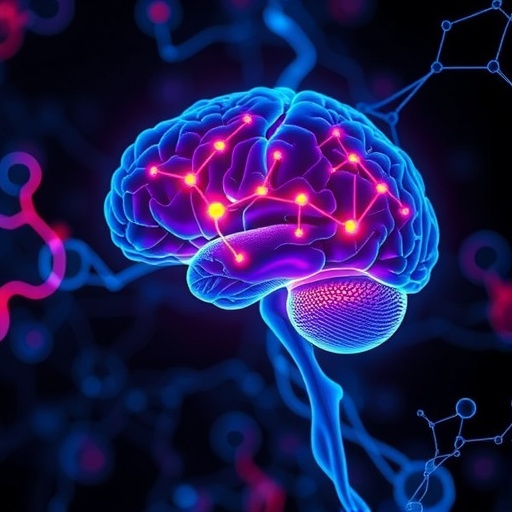In a groundbreaking study published in the journal Journal of Autism and Developmental Disorders, researchers have illuminated the intricate interplay of autistic characteristics, internalizing and externalizing behaviors, alongside personality traits in autistic youths. This work, spearheaded by Dewitte, Van der Hallen, and Prinzie, employs an innovative network analysis approach that sheds new light on how these factors are interconnected, potentially paving the way for more personalized interventions.
The traditional understanding of autism has often focused on the observable characteristics, such as social communication deficits and restricted interests. However, this study transcends the conventional frameworks by integrating a broader spectrum of psychological dimensions. This multi-faceted view recognizes that autistic individuals often navigate a complex emotional landscape, heavily influenced by both internal and external behavioral patterns, making it necessary to explore these influences in depth.
The research team’s utilization of network analysis is particularly noteworthy. By employing this advanced statistical method, the authors map out the relationships between various traits, allowing for a visual representation of how different components of personality and behavior interact within autistic youth. This method of analysis highlights the significance of each characteristic, positioning them within a broader context rather than in isolation.
A significant finding from the study indicates that there are notable correlations between certain autistic traits and both internalizing behaviors—such as anxiety and depression—and externalizing behaviors, which may encompass aggressive tendencies or conduct issues. This interplay suggests that socio-emotional difficulties are prevalent and warrant further attention. Such insights could inform clinicians about the potential for co-occurring conditions that may not always be immediately recognized in clinical practices focused solely on the core a characteristics of autism.
Moreover, this research identifies specific personality traits that appear to be involved in these dynamics. For instance, aspects such as sensitivity to social feedback and behavioral rigidity are linked with both anxiety and aggressive outbursts. Understanding these associations sheds light on potential vulnerabilities in autistic individuals, suggesting that their personality traits can significantly influence their behavior and emotional well-being.
Beyond establishing correlations, the network analysis delves into the causative pathways between the studied traits. Recognizing how certain autistic characteristics may lead to particular behavioral outcomes can revolutionize therapeutic approaches. The findings imply that targeting specific autistic traits—through cognitive-behavioral strategies or social skills training—might considerably reduce internalizing and externalizing behaviors, ultimately contributing to improved mental health outcomes for these youths.
Furthermore, the implications of this research stretch beyond individual treatment strategies. By framing autism in terms of broader personality and behavioral networks, there is a call to rethink existing diagnostic criteria and treatment protocols. This holistic approach can lead to more comprehensive support systems, providing autistic individuals with the tools needed to navigate their unique challenges.
In addition, this study has significant implications for educational settings. Educators equipped with knowledge of the intersections between autism and behavioral tendencies can create more inclusive environments. Tailored support strategies may be developed which incorporate emotional regulation techniques, fostering resilience and adaptive skills among students on the spectrum.
The research also brings forth the discussion about the stigma associated with behavioral challenges in autism. By understanding that externalizing and internalizing behaviors are not distinct but rather interwoven into the fabric of an autistic individual’s experience, there is an opportunity to shift societal perceptions. This perspective promotes empathy and encourages communities to embrace neurodiversity.
Another critical aspect highlighted by the study is the role of family dynamics in influencing behavioral outcomes. The interactions within family units can either mitigate or exacerbate maladaptive behaviors. As such, intervention frameworks that include family therapy could be advantageous, fostering healthier communication and coping strategies within family systems.
Moreover, mental health professionals are urged to consider these findings in their practices. Integrating these insights into therapeutic contexts could allow for a more nuanced understanding of the challenges faced by autistic youths. Personalized strategies taking into account both personality traits and behavioral tendencies can enhance therapeutic efficacy and improve patient outcomes.
The research ultimately serves as a catalyst for future studies. Given the complex nature of autism, further exploration into the various dimensions of personality, behavior, and emotional health promises to yield vital insights. Future research initiatives could focus on longitudinal studies to track these relationships over time and assess the impact of targeted interventions.
In conclusion, Dewitte, Van der Hallen, and Prinzie’s study marks a significant advancement in the understanding of autism. By adopting a network analysis approach, the authors illuminate the complex interactions between autistic characteristics, personality traits, and behaviors. This cross-sectional view encourages a shift towards personalized, holistic intervention practices, with the potential to offer a brighter future for individuals navigating the challenges of autism.
As the field continues to evolve, this research advocates for a comprehensive approach that champions the unique identities and experiences of autistic youths. By embracing their multifaceted nature, society can create pathways for acceptance, understanding, and growth, ultimately allowing every individual to thrive.
Subject of Research: Interconnections of Autistic Characteristics with Behaviors and Personality Traits in Autistic Youths
Article Title: Conceptual Intersections of Autistic Characteristics, Internalizing and Externalizing Behaviors, and Personality in Autistic Youth: A Network Analysis
Article References: Dewitte, M.M.J., Van der Hallen, R., Prinzie, P. et al. Conceptual Intersections of Autistic Characteristics, Internalizing and Externalizing Behaviors, and Personality in Autistic Youth: A Network Analysis. J Autism Dev Disord (2025). https://doi.org/10.1007/s10803-025-07130-1
Image Credits: AI Generated
DOI: https://doi.org/10.1007/s10803-025-07130-1
Keywords: Autism, Network Analysis, Internalizing Behaviors, Externalizing Behaviors, Personality, Behavioral Patterns, Autism Interventions
Tags: autism behavior patternsautism study findingsemotional landscape of autistic individualsinnovative research methods in autisminterconnected traits in autisminternalizing and externalizing behaviorsmapping autism characteristicsmulti-faceted understanding of autismnetwork analysis in autism researchpersonality traits in autistic youthpersonalized interventions for autismpsychological dimensions of autism





